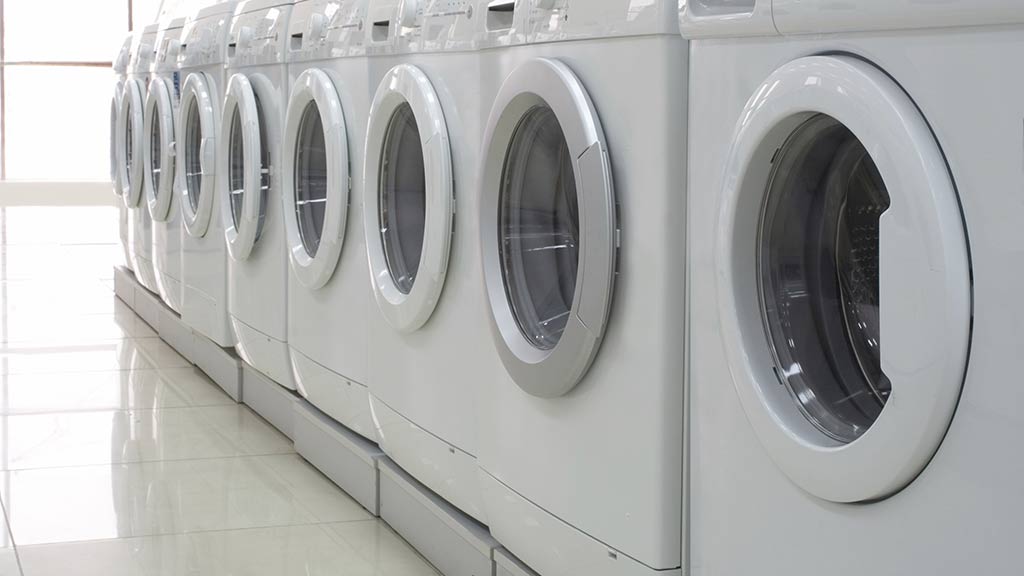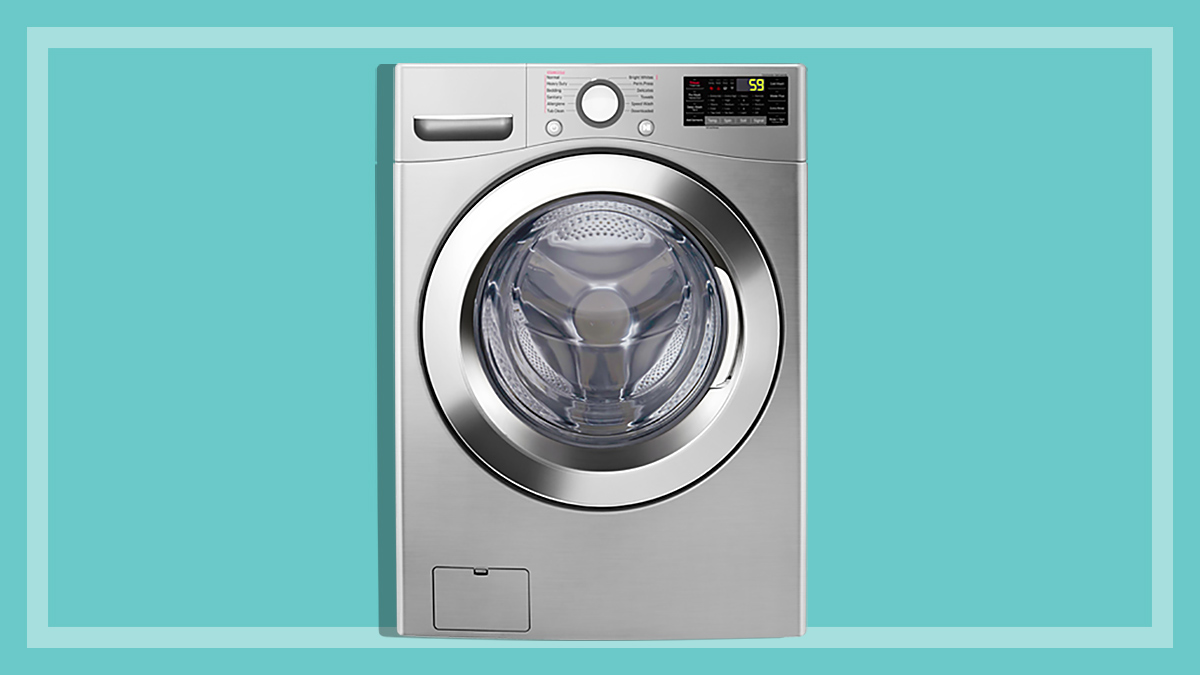Get our independent lab tests, expert reviews and honest advice.
How we test washing machines

Washing machines are one of our most popular reviews. And given they’re a costly purchase, it pays to do your research when it comes time to buy a new one. Two similarly priced models might end up with wildly different running costs over 10 years due to how much electricity and water they use.
On this page:
- Our expert testers
- How we choose which washing machines to test
- How often we test washing machines
- How does CHOICE test washing machines?
- Test criteria explained
- Our laundry test lab
Our experts conduct tests on up to 50 washers each year to keep up with the latest trends and features. Here’s how they do it.
Our expert testers
With over 30 years’ experience in the laundry lab, we’re proud of our testers. They’ve seen all types of features and washers come through the labs, but one thing never changes – they need to find what gets your clothes clean. We focus on the basics so that you can buy with confidence, knowing your new washer will work well.
On top of this, many of our testers sit on Standards committees – both national and international. This means we keep up to date with how labs and manufacturers are changing the standards, and can give you a voice in this forum, where sometimes only government and industry are represented.
We also conduct regular CHOICE member surveys. We’ll ask what you put in your washing machine, which programs you run, which features you think you need, and what’s on your wish list. This guides our test methods, which is why they change every once in a while to reflect your changing laundry habits.
How we choose which washing machines to test
Why do we choose one washing machine over another? There are several reasons, but our priority is to test what you’ll see in stores. Sometimes we might not cover a brand that has one model that’s only sold 100 samples in Australia, and instead will focus on big names like LG, Bosch and Westinghouse.
That means you can at least see how the washer performs before you buy it and see if you’re happy with it. How do we know what’s in retailers? We check current market figures to see what’s selling well. We’ll also include models that you’ve requested – if a lot of members want it, we’ll test it.
Once we know what you want to read about, our buyers use your member fees to purchase these models from a variety of retailers, then bring them into our laundry lab as is. This means we get what you’d get, and not something that has potentially been ‘tweaked’ for better performance.
How often we test washing machines
Along with dishwashers, we test washing machines every 4–6 weeks, and we tend to test in batches of six. We do this because manufacturers are constantly releasing new models into the market. We’ve seen some models discontinued after just a few months, but others are available for several years. Unlike televisions where the models change every year, washing machine models tend to be available in stores for between three and five years.
Newer brands seem to be releasing more frequently, perhaps looking for the best combination of features. Established brands and newer brands on the market are always looking for the balance to get the better star rating, because a good star rating is attractive to consumers, which equates with higher sales.
How does CHOICE test washing machines?
Contrary to popular opinion, we don’t get CHOICE employees to bring in their dirty laundry. We use set loads of cotton materials that are used in the international testing method that are made up of bed sheets, small towels and pillow cases. Why? Because if you want to compare washing machines fairly, you have to use the same conditions for all of them.
We also use swatches of cloth that are embedded with a specific amount of dirt, fray swatches that are identical, and detergent that is made up of a very specific formula. This is all to minimise the amount of variables so you can see which washer is best when comparing them. Where we can, we use the Australian and International Standards, then temper these with real-world responses from you, our members.
Test program selection
Over the years we’ve received many member responses to our product use surveys, which ask about which wash programs you use. Because of your feedback, CHOICE uses a set of testing criteria that generally involves a normal, cold wash. When this doesn’t exist on a machine, we use the closest approximation to a normal, cold wash.
Why do CHOICE results sometimes differ to those on energy and water labels?
Because of this selection, you’ll sometimes see differences between what the energy and water labels say on the machine and our results. This is because manufacturers try to get as good an energy and water label as possible – the more stars they have, the better the chance you’ll buy their product.
Unfortunately, this often means the program the manufacturer selects is not what consumers will choose at home.
Test criteria explained
The CHOICE Expert Rating, the overall score that determines which products we recommend, is based on a washing machine’s performance across the following test areas (weightings in brackets):
- dirt removal (40%)
- rinse performance (20%)
- water efficiency (15%)
- spin efficiency (10%)
- gentleness (15%).
* Models with cycle times longer than 90 minutes receive a penalty reflecting the extra time taken for our test cycle. This penalty applied to the overall score ranges from 2% to 8%.
Dirt removal
Our lab testers subject all washing machines to the same round of rigorous scientific testing. First, using a normal cold water wash cycle, they test each machine to see how it shifts tough stains from specially prepared cloths that have been attached to a standard wash-set of linen.
After the wash cycle has finished, the testers use a special machine to examine each cloth to see how much light is reflected from each stain, which allows them to calculate how much dirt has been removed. This machine is more sensitive than the human eye: differences of 6% or more in our dirt removal scores are visible.
Cold water washes
Since most Australians wash in cold water, we apply a small penalty in our CHOICE Expert Rating to models that can’t do a proper cold wash (at about 20°C) on their ‘normal’ cycle. While the higher wash temperature might slightly increase a machine’s dirt removal and rinse effectiveness scores, it also means it’s using more electricity than it would if it were able to do a true ‘cold’ wash: our penalty compensates for this. We still connect both hot and cold connections if they’re available.
Rinse performance
This is a measure of how well the machines keep the dirt suspended in the water (rather than depositing it back onto your clothes) and how well they rinse out the detergent. We add a marker chemical to the wash. At the end, we take a sample of the water remaining in the clothes to determine the amount of chemical that’s left – the less there is, the better the rinse.
Water efficiency
Water flow meters are connected to each machine to measure water use. To compare efficiency between different-sized machines, we calculate the amount of water used per kilogram of the test load of washing. The lower the water consumption per kilogram of clothing, the higher the efficiency score.
Spin efficiency
The test load is weighed before and after each wash. The higher the score, the more water is removed, which means the washing takes less time (and energy, if you use a dryer) to dry. We use the maximum spin speed (some machines let you vary the speed).
Gentleness
To check for fabric wear, we attach swatches of easily frayed fabric to the garments in each load. The area of the swatch is measured before and after the wash – the less fraying, the gentler the machine is on your clothes and the better the score.
Noise levels
The maximum noise level is recorded during the spin cycle and is measured one metre away from the machine and one metre above the ground. Typically, the noise level of these machines is similar to that of a normal conversation (about 65dB). It’s not an absolute noise measurement – the acoustics of your home will determine exactly how a machine sounds in use – but it’s a good comparative measure.
Reliability, satisfaction and service scores
Durability testing is a very long and costly process – by the time we’d get results for a model, it probably wouldn’t be on the market. Instead, we ask our members whether they’ve had any problems with their washers, and whether they’d buy the same brand again.
You can see which brands have fared best by checking the reliability, satisfaction and survey scores in our washing machine test results table.
Our laundry test lab
The CHOICE laundry test lab is a purpose-built facility equipped with precisely calibrated measurement tools and reference machines for our testers to bring you the right results.






